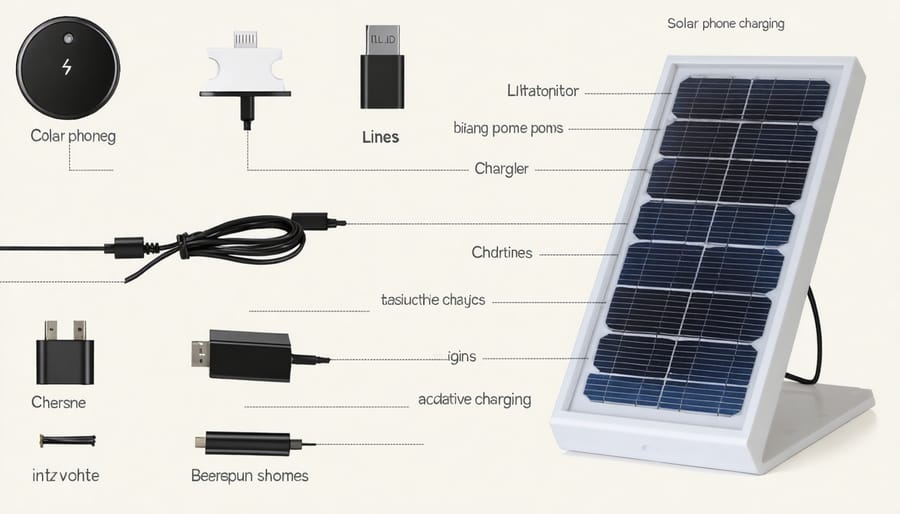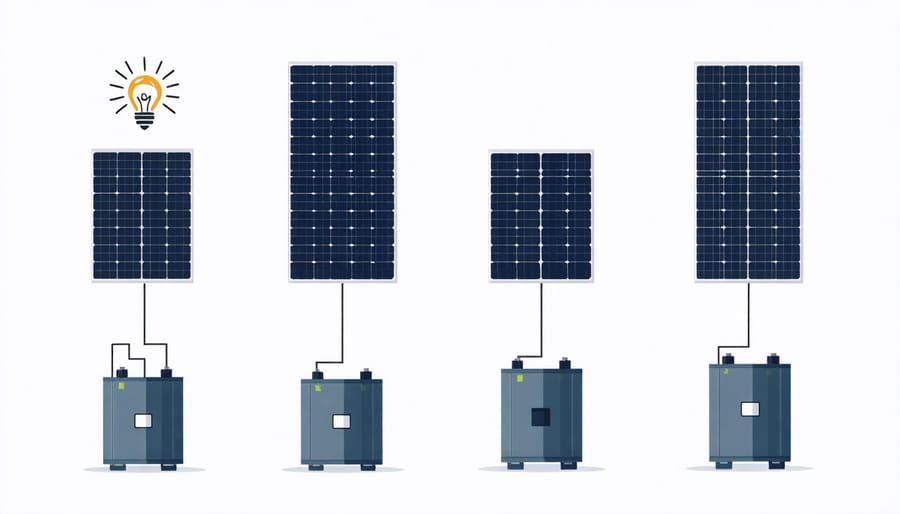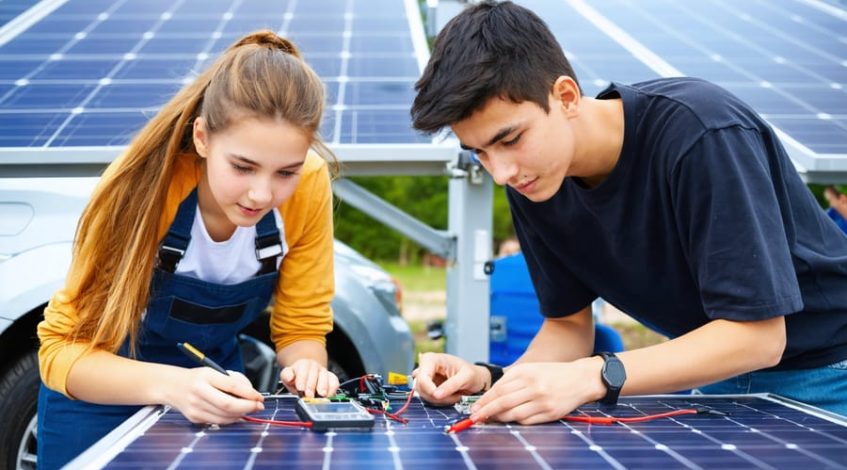Solar power projects empower students to become tomorrow’s renewable energy innovators while mastering fundamental STEM principles. Through hands-on experimentation with photovoltaic cells, circuit design, and energy conversion, students develop critical problem-solving skills essential for real-world applications. These fun solar energy activities bridge theoretical concepts with practical implementation, creating engaging learning experiences that demonstrate the immediate impact of sustainable technology.
From building basic solar-powered cars to designing efficient solar charging stations, these projects provide measurable outcomes that reinforce scientific principles while inspiring environmental stewardship. Educational institutions across the globe are incorporating solar energy experiments into their curricula, recognizing their unique ability to combine physics, engineering, and environmental science in compelling, hands-on formats.
The following collection of solar projects offers varying complexity levels, ensuring appropriate challenges for students from elementary through high school, while maintaining alignment with educational standards and learning objectives.
Small-Scale Solar Panel Efficiency Studies
Testing Environmental Factors
Understanding how environmental factors affect solar panel performance basics is crucial for optimizing solar energy systems. Students can conduct several controlled experiments to measure these impacts effectively.
Temperature testing involves monitoring solar panel output at different times of day and varying weather conditions. Using a digital multimeter and temperature sensor, students can record voltage and current measurements while tracking temperature changes. This demonstrates how panel efficiency typically decreases as temperature rises above 25°C (77°F).
Shading experiments help quantify power reduction from partial panel coverage. By systematically covering different percentages of the panel surface with opaque materials, students can measure the non-linear relationship between shading and power output. This illustrates why even small amounts of shade can significantly impact system performance.
Angle optimization tests explore the relationship between panel tilt and energy generation. Students can mount panels on adjustable frames and measure output at various angles throughout the day. This practical exercise demonstrates why proper panel orientation is essential for maximizing solar energy capture.
These experiments provide valuable hands-on experience while teaching fundamental concepts about solar energy efficiency. Data collected can be analyzed using spreadsheets, creating graphs that visualize the relationships between environmental factors and power output.

Data Collection and Analysis Methods
Students can employ various data collection methods to analyze solar panel performance and energy generation. Digital multimeters measure voltage and current output, while pyranometers assess solar irradiance levels. Data loggers automatically record measurements at predetermined intervals, creating comprehensive datasets for analysis.
For meaningful analysis, students should collect data across different weather conditions, times of day, and seasons. Key metrics include power output (measured in watts), daily energy generation (kilowatt-hours), panel temperature, and ambient conditions. Excel spreadsheets or specialized software can help organize and visualize this information through graphs and charts.
Advanced projects may incorporate weather station data to correlate environmental factors with solar performance. Students can use online solar calculators and modeling tools to compare theoretical predictions with actual measurements. Mobile apps designed for solar monitoring provide user-friendly interfaces for data collection and basic analysis.
Statistical methods such as regression analysis help identify patterns and relationships between variables. Students should document their findings through detailed reports, including methodology, data tables, and visual representations. This systematic approach teaches valuable skills in scientific measurement, data management, and analytical thinking while demonstrating real-world applications of solar technology.
To ensure accuracy, regular calibration of measurement tools and consistent documentation of collection methods are essential. Students should also consider factors such as shading, panel orientation, and maintenance conditions when interpreting results.
Solar-Powered Device Projects

Solar Phone Chargers
Creating a portable solar phone charger demonstrates practical solar applications while teaching fundamental concepts of renewable energy. This project requires a small solar panel (6V-12V), a USB charging module, connecting wires, a project box, and basic tools.
Begin by connecting the solar panel to the USB charging module, ensuring proper polarity. The charging module regulates voltage output to safe levels for mobile devices. Mount both components securely inside the project box, leaving the solar panel exposed to sunlight. Create openings for the USB port and any necessary ventilation.
For optimal performance, incorporate these technical considerations:
– Use a solar panel rated at least 2W for effective charging
– Include a blocking diode to prevent reverse current flow
– Add a capacitor to stabilize power output
– Consider including a battery bank for energy storage
Testing should occur under various lighting conditions to determine charging efficiency. Students can measure voltage output using a multimeter and calculate power generation using the formula P = V × I. Document charging times and compare them with standard wall chargers.
Safety considerations include:
– Proper insulation of all electrical connections
– Weather-resistant housing for outdoor use
– Voltage regulation to prevent device damage
– Clear labeling of positive and negative terminals
This project teaches crucial concepts about solar energy conversion, electrical circuits, and energy storage while creating a practical device for daily use. Students learn to calculate energy requirements, understand power conversion efficiency, and gain hands-on experience with renewable energy technology.
Solar Water Heaters
Solar water heaters represent an excellent introductory project for students to understand thermal energy capture and transfer principles. This project demonstrates how solar energy can be harnessed for practical household applications while teaching fundamental concepts of heat absorption and insulation.
To construct a basic solar water heater, students will need a large glass or clear plastic container, black construction paper or paint, reflective materials such as aluminum foil, copper tubing, and insulation materials. The project can be scaled according to available resources and complexity requirements.
Begin by creating a collector box using a shallow container lined with black paper or paint to maximize heat absorption. Install copper tubing in a serpentine pattern within the box, ensuring maximum exposure to sunlight. The tubing should connect to an elevated water reservoir at one end and an collection container at the other.
For enhanced efficiency, line the sides of the collector box with reflective material to concentrate solar energy onto the tubing. Add insulation beneath the tubing to minimize heat loss. Cover the entire assembly with clear glass or plastic to create a greenhouse effect.
When testing the system, measure water temperatures at both inlet and outlet points to calculate the temperature differential. Students can experiment with variables such as:
– Angle of the collector relative to the sun
– Flow rate of water through the system
– Different insulation materials and thicknesses
– Various reflector configurations
This project typically achieves water temperature increases of 10-20°F on sunny days, providing tangible results that demonstrate solar energy’s practical applications. Documentation of temperature changes and system efficiency calculations offers valuable data analysis opportunities.
Energy Storage Experiments
Battery Storage Systems
Battery storage systems form a crucial component of solar power education, offering students hands-on experience with energy management principles. Through structured experiments, students can explore various battery technologies including lead-acid, lithium-ion, and nickel-metal hydride configurations.
A fundamental project involves comparing the charging and discharging characteristics of different battery types. Students can measure voltage levels, charging times, and energy retention rates using basic multimeters and data logging equipment. This helps demonstrate how various battery chemistries perform under real-world conditions.
Storage configuration experiments allow students to understand parallel and series connections. By connecting multiple batteries in different arrangements, students observe how voltage and current capacity change, while learning about load distribution and system efficiency.
Advanced projects might include building a complete solar-battery system with charge controllers. Students can monitor charging cycles, analyze energy losses, and optimize storage capacity for various load requirements. This practical experience helps develop critical thinking about energy management and system design.
Safety considerations are paramount when working with batteries. Students should learn proper handling procedures, understand potential hazards, and implement appropriate safety measures. This includes proper ventilation, correct wire sizing, and the use of appropriate protective equipment.
Documentation of battery performance through data collection and analysis provides valuable insights into system efficiency and helps students develop research skills applicable to real-world solar installations.

Thermal Storage Methods
Thermal storage experiments offer students valuable insights into how solar energy can be captured and retained for later use. A fundamental project involves testing different materials for their heat retention properties. Students can construct simple insulated containers using common materials like sand, water, and stones, measuring temperature changes over time to evaluate their thermal storage capabilities.
One practical experiment involves creating a solar thermal collector using black-painted containers filled with various thermal mass materials. Students can compare the heat retention properties of water, salt solutions, and phase-change materials, recording temperature measurements at regular intervals during both heating and cooling phases.
An advanced project option includes designing and building a small-scale thermal battery system. This involves selecting appropriate heat storage materials, designing an effective insulation system, and developing methods to transfer heat in and out of the storage medium. Students can explore concepts like specific heat capacity, thermal conductivity, and heat loss prevention.
For quantitative analysis, students should document temperature changes, heat retention duration, and energy storage efficiency. This data can be used to calculate the system’s performance metrics and evaluate its practical applications. These projects demonstrate real-world applications of thermal storage in solar power systems while teaching fundamental principles of thermodynamics and energy conservation.
To enhance learning outcomes, students should investigate how their thermal storage solutions could be scaled for residential or commercial applications, considering factors like cost-effectiveness, material availability, and maintenance requirements.
Data Monitoring and Analysis Tools
For effective solar power projects, students need reliable data collection and analysis tools to measure system performance and understand energy generation patterns. Modern solar energy monitoring tools range from basic multimeters to sophisticated data logging systems.
Essential monitoring equipment includes:
– Digital multimeters for measuring voltage, current, and resistance
– Pyranometers for solar irradiance measurement
– Temperature sensors for panel and ambient temperature tracking
– Data loggers for continuous performance recording
Software solutions complement hardware tools by providing real-time visualization and analysis capabilities. Popular options include:
– Arduino-based monitoring systems for DIY projects
– Professional solar monitoring platforms like Solar-Log
– Open-source data analysis tools such as PVsyst
– Mobile apps for remote system monitoring
Students can leverage these tools to:
– Calculate system efficiency
– Track daily and seasonal energy production patterns
– Identify performance issues
– Create detailed performance reports
– Compare theoretical vs. actual energy yields
When selecting monitoring tools, consider:
– Budget constraints and educational requirements
– Data accuracy and reliability needs
– Ease of use and learning curve
– Integration capabilities with existing equipment
– Data export and sharing features
For beginning students, basic monitoring kits provide essential measurement capabilities while advanced projects might require more sophisticated tools with detailed analytics. Many manufacturers offer educational discounts and teaching resources to support student projects.
Regular data collection and analysis help students understand real-world solar system behavior and develop practical skills valuable for future careers in renewable energy. Documentation of project results using these tools also enhances learning outcomes and project presentations.
Solar power projects offer students invaluable hands-on experience in renewable energy technology while developing critical thinking and problem-solving skills. Through these educational initiatives, students gain practical knowledge of photovoltaic systems, energy conversion principles, and sustainable development practices that will prove essential in our rapidly evolving energy landscape.
The projects outlined demonstrate how theoretical concepts translate into real-world applications, preparing students for future careers in renewable energy and environmental sciences. From basic solar cell experiments to complex grid-tied system designs, these activities foster a deep understanding of solar technology’s potential and limitations.
Looking ahead, future research directions should focus on incorporating emerging technologies such as advanced energy storage solutions, smart grid integration, and improved photovoltaic materials. Students can explore innovative applications like solar-powered transportation systems, building-integrated photovoltaics, and hybrid energy solutions that combine solar with other renewable sources.
Additionally, there’s significant potential for cross-disciplinary projects that merge solar technology with artificial intelligence, data analytics, and Internet of Things (IoT) applications. These integrations will be crucial in developing more efficient and intelligent solar energy systems.
To maximize the educational impact, institutions should continue developing partnerships with industry leaders, providing students access to cutting-edge technology and real-world project experience. This practical exposure will be invaluable in preparing the next generation of renewable energy professionals and sustainable development advocates.

